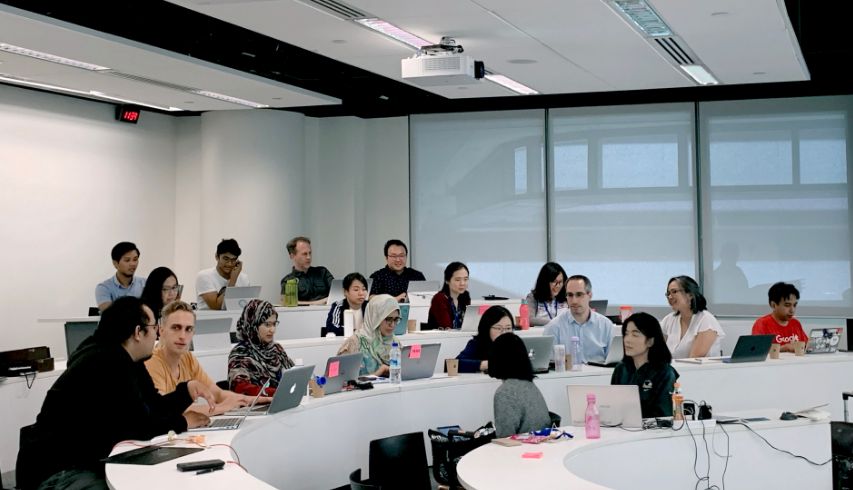Breaking Down Barriers: How AI is Empowering Neurodivergent Individuals in the Workplace
Let me start by saying I’m no diversity expert, neurodivergent or otherwise. I own the fact that most of my experience comes from a position of the majority in America. White, male, heterosexual, cisgender, Christian, middle class, etc, etc. But I try to keep an open mind, eye, and ear to those different around me. I understand that they view problems differently than I do and can help me create a more holistic solution to issues (check out a recent Call Design blog about the importance of difference). I also realize that I can grow by trying to understand the perspectives of those different from me, which is exactly what happened when I recently hired a forecasting analyst with autism. Through my relationship with her, she has opened my eyes to the incredible value of AI and especially generative AI (ChatGPT, Google’s Bard, Bing Chat) for those that are neurodivergent and how it can help them function with more comfort, safety, and confidence in the workplace.

1 – One of the biggest impacts is communication. Platforms like ChatGPT can provide amazing translation services between people that think and function differently.
1a. Conversations, whether verbal or written, can be challenging for people that think differently than you do. The way that people off the spectrum connect dots is different than those on the spectrum. Generative AI allows people the opportunity to take emails or requests and translate them in a way that can make sense. “What is this person asking me to do” *paste copied email*. This option can empower them to not only execute their work quicker but reduces the anxiety that comes with asking someone to clarify for the second, fourth, or eighth time.
1b. Sometimes communication is easier with math. It’s straightforward and logical, and it avoids all of the nuances of communication. “This number has gone up because it’s bigger than what it was last month.” Even for people without communication challenges, such as myself, explaining how a calculation works can be confusing, even for the person that wrote it. “I know it works but give me a few minutes to try and explain it.” Generative AI can take a calculation and explain it in a common language for other people to understand. It can also expand upon data analysis and provide a storytelling approach to better relay and explain the importance of the data.
1c. We all know that generative AI can write emails and blogs (maybe it even helped with this blog!?!), but did you know that it can also remember your tone of voice? Often people with autism might miss or forget small nuances that soften requests in emails. So their emails may come across as blunt, harsh, or at worst, confrontational. Using AI to create their emails is an easy win, but it can feel inauthentic to use language and a tone of voice so different from their own. This is where teaching AI how to write for them comes in handy. It allows them a way to communicate with facts, statements, and logic that is comfortable for them but softened in a way that makes it easier for the end user to consume and interact with.

2 – AI is already impacting daily life for neurodivergent people in amazing ways.
2a. Neurodivergent doesn’t just mean autistic people, it also includes people with ADHD. ADHD makes it difficult for many people to remember tasks or stay on schedule. My wife (who has ADHD) is notorious for running late, hyper-focusing on something and then not finishing it, and getting lost in the story she’s telling someone. AI is already helping these individuals by allowing them to simply say “remember X appointment” or “remind me of so-and-so’s birthday”. The ability to simply say it out loud is huge. Because the calendar app might just be a few clicks away, but there are dozens of distractions on their phones waiting to trip them up from putting their next appointment into their schedule.
2b. AI can provide some basic companionship without the fear of judgment. Social interactions can be exceptionally triggering for some and the ability to have a conversation with a bot can allow them an element of companionship with minimal anxiety. This isn’t to say that I believe bots can replace humans but they can remove a small element of loneliness in a way that minimizes fear and stress. AI can also help them improve their communication skills by allowing them to practice interpreting someone’s communication and responding with an appropriate and logical next statement. That back and forth can be taxing but like with building muscle, with repeated practice it can get easier.

3 – AI will continue to evolve and provide additional help that may not be here yet.
3a. Learning and remembering information is often a challenge for neurodivergent people. When you think differently, you’re likely going to learn differently as well. AI can help with this by providing personalized learning to both their learning style and ability. Personalized learning increases the chance for retention and use of information, regardless of personal limitations or challenges. However, for people with autism, this type of learning could greatly increase their ability to contribute to a professional environment and grow their career.
3b. I can also see where AI will eventually provide an on-screen explanation of when someone is getting frustrated, using sarcasm, or other communication cues that can be difficult for people with autism to pick up on. This real-time translation will empower people to pivot their conversation for greater effectiveness with their audience. AI will also be able to read the body language of people on video and help someone know when the audience is actively engaged or losing interest because they are fidgeting a lot or looking away from their monitor. These efforts will benefit everyone but will have a particularly positive impact on those that naturally are challenged with social cues and reading body language.
We still have a lot to learn about generative AI and we are only starting to see the beginnings of how it’s going to change our world. However, I am incredibly excited about how it’s already making a positive impact, especially for those that are neurodivergent. I know we may take a few steps back as we walk down the AI road, but I’m hopeful that platforms like Bard and chatGPT will only increase our ability to include people of differing backgrounds and perspectives and make them feel like they belong.
At Call Design we believe employees have the right to be Happy, Engaged, Fulfilled, and Aligned at work and that has to include intentional use of technology to bring in diverse voices. Reach out to us today if you’re interested in learning how you can build a similar culture for your contact center!












